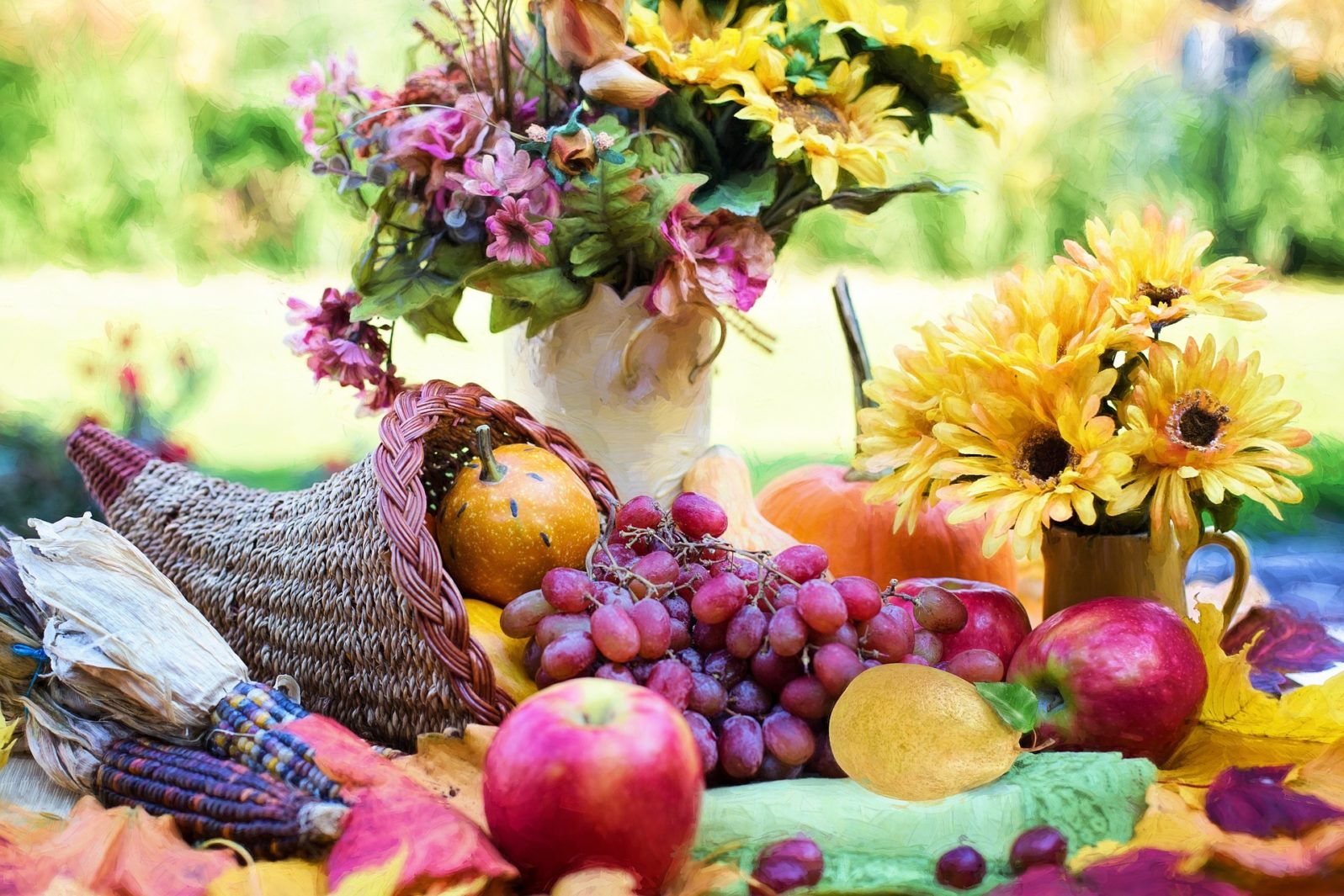Food itself has no flavor at all. Flavor is in the sensations — really the brain — of the beholder (and taster)
Venture to learn how human beings enjoy food, and you’ll discover exquisite evidence of intelligent design. Like so many biological systems, detecting flavor involves specialized hardware components and the corresponding software to process information delivered by those components.
To Sniff, to Chew, Perchance to Taste
Just take your seat at the festive family meal and look around. You can bet nobody there knows that the delicious flavors of turkey stuffing, gravy, yams, cranberry sauce and all the other goodies that Mom put on the table are the results of extremely sophisticated computing.
Put your fork or spoon into the first bite from your plate. Molecules of hundreds of the food item’s chemical components waft into your mouth and nose. These odor molecules deliver the early hints of your tasty treats, but biting and chewing the food items liberate far more odor molecules and in greater quantities.
Did you know? Heating food and dipping food into drinks releases more types and amounts of odor molecules that contribute to flavor.
The smell of foods makes up 80% of a food’s flavor, and the individual molecules start triggering your sense of smell immediately. For some food items, it takes only a few individual molecules for your smell sense hardware to detect them, while other molecules require higher numbers.
Follow now the odor molecules from your food. Some odor molecules come into your nose directly from outside your nose (orthonasal smell). Many more travel toward the back of your mouth and up into the back of your nose to be detected there (retronasal smell).

The odor molecules pass across a dense field of receptors (olfactory epithelium). Here the magic begins. In this 1.5 square inch field are over 100 million receptor cells (neurons) of several biochemically different cell types. Each receptor cell is configured to detect only certain odor molecule components out of the thousands, or even millions, possible. Humans have about 350-450 different types of receptor cells, and any given odor molecule can activate several types of receptors. There are many individual receptor cells for each configuration, scattered across the field of cells. The outputs from about 25,000 individual receptor cells for each specific odor molecule are coded messages sent to an initial collection station (glomerulus), processed, and forwarded to an olfactory bulb that indicates what odor molecules are being detected. The olfactory bulb discriminates among odors, enhances sensitivity of odor detection, filters out background odors, and empowers other brain areas to “tune” for certain odors. From there, the combined odor information is transmitted to the olfactory cortex in the frontal lobe of the brain.
The Tongue Does More Than Wag
None of the odor processing steps described so far is simple, and the whole series happens in real time. Meanwhile, your tongue itself is providing taste information with cells that detect five special sensations: sweet, sour, salty, bitter and umami (or savory, associated with meat). Each taste bud is comprised of 50 to 100 such cells, and you have between 2,000 and 5,000 taste buds on the back and front of your tongue. Other such cells appear on the roof, sides and back of your mouth, and in your throat. Many of these cells also sense temperature and texture, together providing what is sometimes called mouth-sense or mouth-feel. The sense information from your mouth and tongue travel through nerves by routes different from smell information, to some of the same and some different parts of the brain.
What is the purpose of taste? Besides adding to the joy of eating, your sense of taste is the sentry of safety and savor. Below is a chart showing the functions of each taste sensory type.
Taste: The Sentry of Safety and Savor
| Taste Sensation | Objective Function |
| Sweet | Signals high energy food, e.g., mother’s milk, ripe fruits and vegetables |
| Salty | Signals presence of nutrient (salt) necessary for survival |
| Sour | Warns that food item may not be not fresh or has gone bad |
| Bitter | Warns of items that may be toxic and should be rejected |
| Umami (savory) | Signals food item has a meaty quality with high energy |
Flavor is Like a Hologram
So far we’ve nibbled at the surface of flavor’s physiology and biochemistry. But how do we actually sense flavor? Research in the last few decades reveals that, in the brain, flavor resembles vision. Recall that a photograph consists of thousands or millions of tiny colored dots. Similarly, the information from smell produces smell images, the collection of thousands of individual smell input elements indicating the various chemicals and how strong they are being sensed. The brain’s reactions to smells produces a three-dimensional pattern observable with brain scanning equipment. The brain recognizes a smell experience as a 3-D picture of data. And one picture follows another as in a movie, changing in real time.
Did you know? Coffee flavor results from up to 600 different chemicals. Hot coffee delivers more smell molecules and heightened mouth-feel.
Added to the smell images are your other main sensory inputs; smell, mouth-feel, visual, and even sound effects expand the experience. By synthesizing all of this data, your brain can create a full-color 3-D picture with sound for every moment of every bite of every food item you eat.
Technically, the flavor experience comes from more than three dimensions. In the two tables below, notice the variety of mouth-feel sensations, for example, that you might experience as you dine.
Mouth-Feel Receptor Categories
| Temperature sensitive | Pain sensitive |
| Touch sensitive | Pressure sensitive |
Qualities of Mouth-Feel
| Smooth | Creamy | Viscous |
| Crunchy | Crisp | Springy |
| Chunky | Stiff | Soft |
| Slippery | Rough | Gritty |
| Astringent | Hot | Cold |
| Sticky | Dry | Crumbly |
| Lukewarm | Pain (burning, sticking, aching) | Ease of fragmentation |
At your next holiday meal, family celebration dinner, or quick stop for a burger and fries, consciously tune in to the many elements of flavor in every item. You’ll sense how they seem to change, too, from the aroma and first bite through the chewing to the swallow and after-taste. The whole field of food tasting and contests, evaluating everything from baked goods to burritos, stems from humans organizing how to understand and enjoy the marvels of flavor.
Pop quiz: Pumpkin pie is better cold or warmed? With whipped cream or not? Crunchy or soft crust? Part 2 of this Article will explore how your brain computes the right answer!
References
David Berlinski, The Advent of the Algorithm (New York: Harcourt, 2000).
Gordon M. Shepherd, Neurogastronomy: how the brain creates flavor and why it matters (New York: Columbia University Press, 2013) (primary resource with references cited).
Richard W. Stevens, “Biological Software: Darwin Can’t Connect Your iPod to a Printer,” Salvo Magazine (Issue 19, Winter 2011), 46-48.
Richard J. Stevenson, “An Initial Evaluation of the Functions of Human Olfaction,” Chem. Senses (2010), 3-20 (doi: 10.1093/chemse/bjp083).
Richard Szeliski, Computer Vision: Algorithms and Applications (New York: Springer, 2011) (prepublication full text draft online at https://www.academia.edu/48942532/Computer_Vision_Richard_Szeliski
Source: Designed to Dine: Humans are Computers of Flavor | Mind Matters













